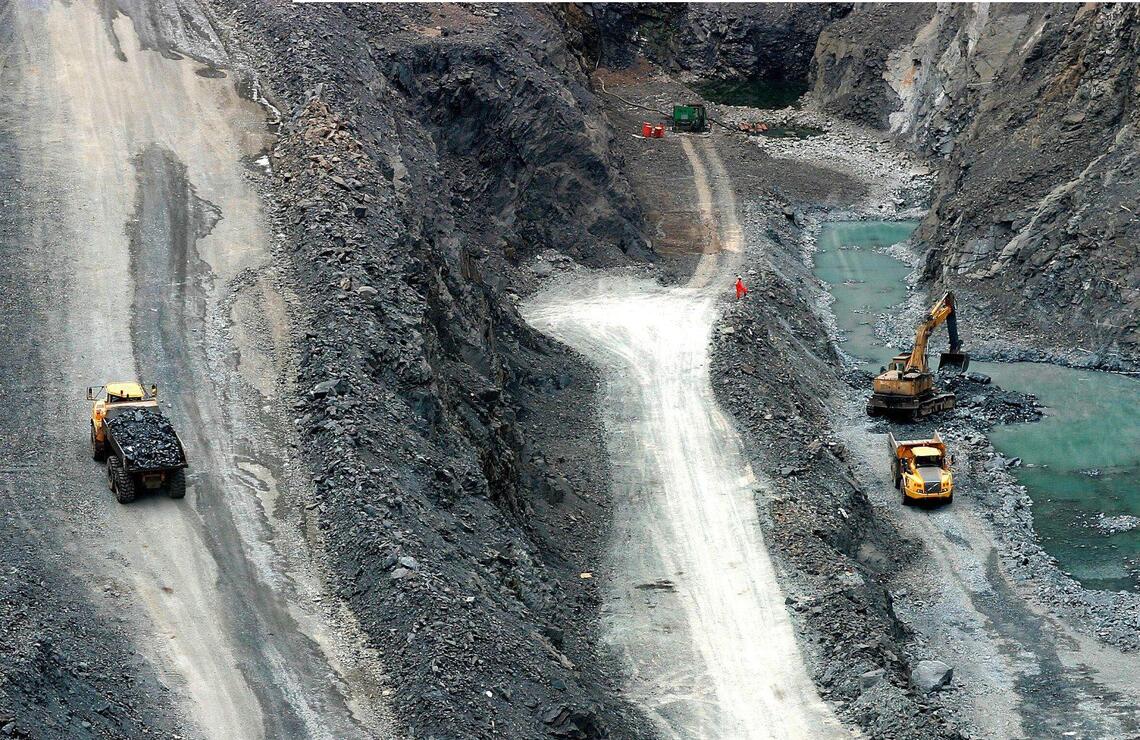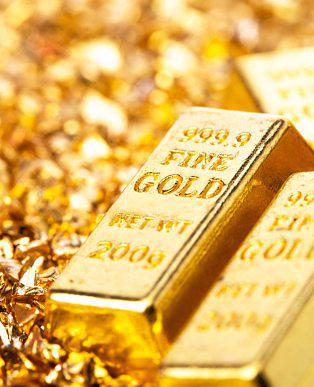
Who profits from Africa's gold?
While the price of this safe-haven commodity continues to rise, there is little return for producer countries. Refining capacity is low and the informal sector still dominates. Ecowas recommends formalising artisanal and small-scale gold mining.
As the ultimate safe-haven asset, the price of gold soars in times of crisis. Fifteen years ago, after the collapse of Lehman Brothers and the subprime crash in September 2008, the price of gold almost doubled in eighteen months, rising from $627 an ounce in 2009 (an ounce is equivalent to around 31.1 grams) to more than $1,000 in 2010. Over the past two years, the sometimes unexpected consequences of the war in Ukraine (the conflict precipitated the bankruptcy of Credit Suisse and its takeover by its historic rival UBS) have resulted in an ever-growing investor gold rush. The yellow metal now regularly crosses the $1,000 per ounce threshold ($2,110 in mid-March). Africa possesses around 40% of the world's gold reserves, and 34 African countries mine gold veins. According to the World Gold Council, the continent's top ten producers are now Ghana (127 tonnes in 2022), Mali (102), Burkina Faso (96), South Africa (92), Sudan (80), Guinea (63), Tanzania (51), Zimbabwe (49), Côte d'Ivoire (48) and the Democratic Republic of Congo (44). However, there is a huge discrepancy between gold mining and the amount of gold held in the Central Bank. Ghana is an edifying example: insolvent since December 2022, the heavily indebted country is banking on gold production to revive its economy, and is now outperforming South Africa, a historic producer with ageing veins. Last year, in western Ghana, the two adjacent mines of Tarkwa (owned by South Africa's Gold Fields) and Iduapriem (owned by another South African, AngloGold Ashanti) merged to form the largest mine on the continent. However, the state holds only 10% of the Tarkwa mine and no stake in the Iduapriem mine. IN CENTRAL BANKS RATHER THAN IN SWITZERLAND Gold should no longer be seen simply as a raw material to be mined, but also as a way for producer states to guarantee their currencies. Mali and Burkina Faso, members of the Alliance of Sahel States (AES), are banking on gold to support their plans for a common currency. The problem is that gold is all too rarely refined in Africa. While the number of refineries on the continent is increasing, only one - the Rand refinery, which opened in Germiston, South Africa, in 1920 - is certified by the international standard-setter, the revered London Bullion Market Association (LBMA). African producer countries export their gold to South Africa, the United Arab Emirates (UAE) and Switzerland. Alongside industrial mining, which is often in the hands of South African, Canadian, Australian, Chinese and Russian companies, the African gold sector is characterised by a significant amount of small-scale, informal gold mining, which is unfortunately notorious for endangering people (chaotic urbanisation, landslides, poisoning, school drop-out rates, prostitution, drugs, crime, etc.) and the environment (mercury and cyanide pollution). This type of gold mining, which causes a rush of vulnerable people dreaming of getting rich quickly, is more or less tolerated by African governments. Thousands of gold panners from all over West Africa have settled in Kédougou in eastern Senegal, on the borders of Mali and Guinea. Dozens of informal traders buy the extracted flakes, often for illegal export to neighbouring Mali. At Chami, in Mauritania, the mine operated by the Canadian group Kinross Gold Corporation stands alongside the artisanal pits of informal gold miners, most of whom sell their finds on the black market, where the price is more advantageous than that of the Mauritanian Central Bank's buying office: during the Covid crisis, the disappearance of the illegal buyers meant that more than twenty times as much gold was brought into the official buying office!
FORMALISING THE INFORMAL

A recent ECOWAS report, published in February, recommends ‘formalising artisanal and small-scale gold mining (ASGM)’. Entitled ‘Learnings from West Africa’s regional experiences in the gold sector’, the report notes that repressive measures taken by governments have, paradoxically, had the effect of ‘accentuating the stranglehold of organised crime networks’, and even ‘strengthening their role as a stabilising factor’ in areas where the authorities are often absent. In Burkina Faso, mapping has even demonstrated a link between gold mining activities and terrorist attacks. Artisanal and small-scale gold mining leads to an opaque trade, which converges in Dubai and then Switzerland. The report stresses, however, that artisanal gold mining plays ‘a central role in the economies and dynamics of stability in the Sahel’, by providing an outlet for populations whose other means of subsistence are threatened, in the same way as agriculture in the face of climate change. Ecowas is therefore advocating the ‘formalisation’ of these chaotic artisanal sectors, in order to free them from the clutches of criminal networks, as well as boosting public revenues. Formalisation could involve the setting up of cooperatives to enable miners to pool their resources and gain collective access to bank financing. The proliferation of intermediaries obviously facilitates embezzlement. Because gold is a metal that is as precious as it is easy to conceal, the sector has always been a target for underworld players. The Russian paramilitary group Wagner has acquired exclusive rights to the largest Central African gold mine, Ndassima. According to a report by independent experts, ‘The Blood Gold Report’, published in December 2023, gold from the Central African Republic, Sudan and Mali has earned the Kremlin $114 million a month since the start of the war in Ukraine. And gold extracted from small-scale mines in the east of the DRC by armed groups in conflict is discreetly refined in Entebbe, Uganda, before being shipped to Dubai. In Sudan, which, according to Energy Capital & Power, has one of the largest reserves on the continent, enemy generals Abdel Fattah al-Burhane and Mohamed Hamdan Daglo, known as ‘Hemetti’, are using precious metal trafficking to finance the conflict that has been raging between them and ravaging the country for a year now.